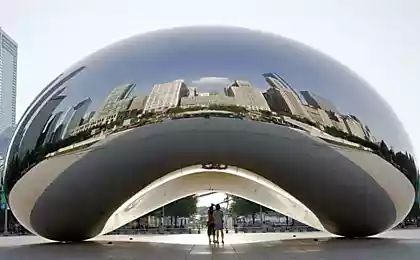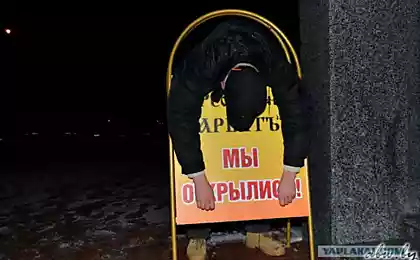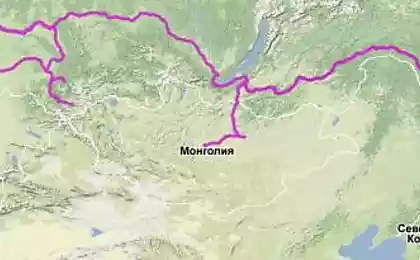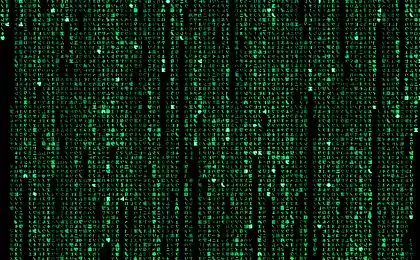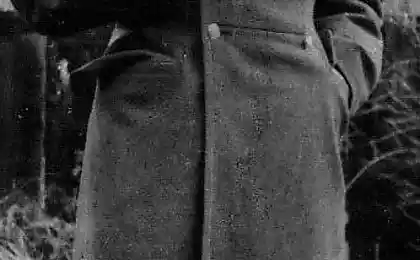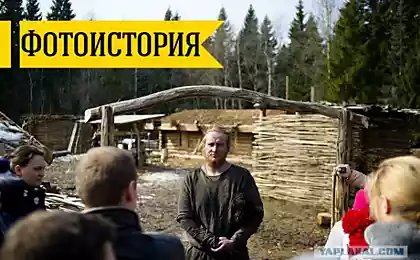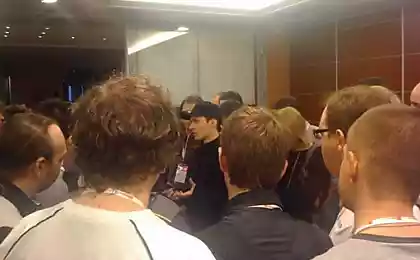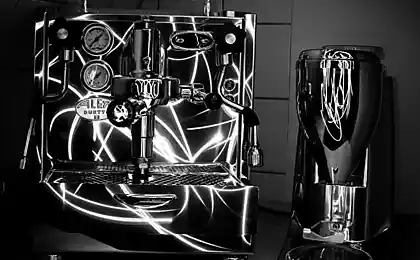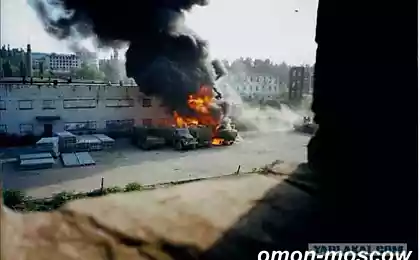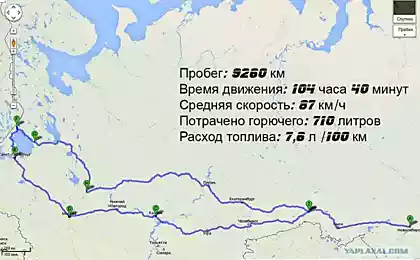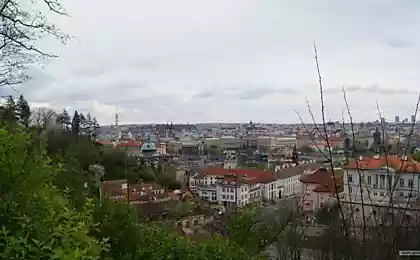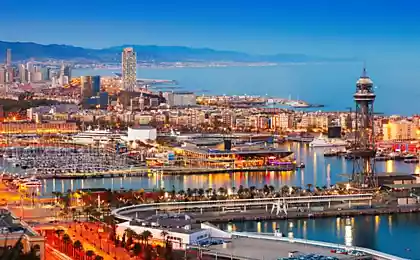625
Pavel Shaburov: Man and machine — we felt cramped in the same space
URBAN LANDSCAPE WITH a "PLUS": WHAT's going on TODAY in URBAN PUBLIC SPACES Just over a hundred years ago the first car in triumph into the city, making their living and providing residents with additional comfort in movement. Technical innovations of the last two centuries: radio, television, computers filled with pride for the scientific progress. Now we are talking about a confrontation between city, people and cars can't share the streets and squares, it became crowded in the same space. 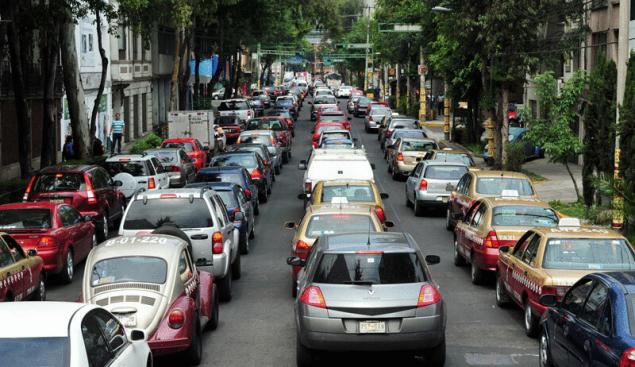
In the late eighties of the XX century the automobile industry has experienced a real boom, which has forced large cities to make serious changes in planning structure, trying to cope with the increasing traffic.
However, the increase in traffic in the cities was faster than the reorganization of the road network. In addition, transport interchanges took almost the entire urban area. In Metropolitan areas, the environmental situation deteriorated and, of course, not only because of transport. Harmful effects on the environment provided the industrial enterprises and communal facilities, carpool and garages, close to residential and public building and with often quite large in size sanitary-a protective zone.
When we talk about the principles of sustainable urban development, to ignore the transport problem is not possible. However, today these problems is to consider a few different angle of view and discuss not only the obvious steps to switch to eco-friendly modes of transport, but also to analyze the whole urban structure with the emphasis on its transport component.
Naturally, the greatest congestion exists on the areas where in addition to the transport of intersections created numerous traffic lights, and it was there that arose the most severe environmental conditions.
If we take for example the Etoile in Paris or Lubyanka square in Moscow, the level of gas exceeds the maximum permissible level for impact on the human body by 5-10 times. Of course, a resident of the city, getting to this area, immediately feeling the excessive concentration of harmful substances in the air, and when the street is hot weather, then stay in this place becomes a health hazard. If to speak about areas where the harmful effects of exhaust gases from transit vehicles is imposed on not less harmful emissions from industrial and utility companies, there is almost impossible to be in any weather and at any time of the year.
Thus, by the beginning of the XXI century we got a very ugly picture of "squeezing" the residents of the city with streets and squares under the influence of traffic and other negative environmental factors. While urban policy, research urbanists everything more clearly built a new paradigm of urban development, with an emphasis on the formation of open public spaces. And while the architects worked on large-scale projects for the recovery of the city people, city residents looking for other Hiking trails, bypassing the polluted area. In such a situation, of course, we are not talking about how to make the public space attractive to residents and tourists. Consequently, urban authorities does not make sense to invest efforts and resources in the landscape organization of these areas.
The liberation of the streets from transport in some cities of Europe began in the 70-ies–80-ies of XX century. In an effort to "breed" pedestrians and motorists of the European town planners of different planning solutions are trying to switch the traffic flow on one street, completely giving up other pedestrians. The result was to change the layout of individual parts of the city. If before the creation of pedestrian streets traffic load on the road network of any part of the city was about equally distributed, when you enter the "no-traffic", the load is redistributed with the increase in traffic on more major roads.
A much more difficult situation unfolded in the squares. After all, there was arranged the whole interchange, which crossed the streets of different importance, trends, bandwidth etc, So the elimination of these crossings was and still is the most difficult event in the reorganization of the planning system of the city. This requires a number of costly and time-consuming procedures: the creation of new transport schemes for the city or its parts, the device is a complex multi-level intersections and structures, changing public transport routes, new bus stations, Parking lots, etc.
In these circumstances, even those landscape elements that was organized and formed in the squares earlier, begin to degrade under the negative environmental impact of the environment, or completely removed from the area in connection with the sprawling asphalt coating. However, today in many European cities the local authorities are ready to take the most serious and costly event to create the comfortable stay of urban dwellers in the squares.
And here we are faced with a number of problems associated with the issues both social and technical in nature.
The last third of the XX century was marked by the active development of transport links between cities, regions and countries. In Europe there is a strong network of motorways (autobahns), running through the whole continent, and perfected the railroad. High-speed trains allow people the daily drive to work, even crossing the borders of neighboring States. A couple of hours spent with the comfort in the train, is far preferable to two hours of standing in city traffic.
Of course, these modern transport facilities have a positive impact on the lives of citizens, improve its quality and give mobility. However, against this background there is a negative factor – the increasing gap of a person with his permanent residence, the so-called "homeland". On the way to work and home a person spends all their social time – this is the term sociologists and psychologists denote the time that a person devotes to the society, communicating with people in public places, including streets and squares, in the cafes and restaurants located in close proximity to the house.
Appeared transport the opportunity to go far enough, "washes away" the population of the area by replacing stay "here and now" to chat in another place and with other people. "When all the movement is slow, already one of the cause on the streets there's life in contrast to the automobile cities, where the speed automatically reduces the level of activity".*
The large number of highways gave an additional impetus to the development of significant suburban construction around big and medium cities. Millions of diverse variety and size of the cottages, wooden and stone buildings, filled to the present time vast areas in a radius of 100 kilometers from the border cities. A significant number of the population leaves town for the weekend and in the summer for a few months to spend most of your time in the fresh air.
In this regard, urban space in these days and weeks a few are empty, what gives, it would seem that the basis for urban authorities to spend considerable resources to create comfort in the urban areas. But such an approach would be fundamentally wrong and would have a very negative impact on various spheres of urban life: the rest of the population in the evening, weekend, tourism development, and most importantly – on the General psychological attitude of the inhabitants to the city, its attractions, history and culture. It understands the far-sighted city government and therefore tend to attract more people in newly organized public urban spaces and squares in the first place, by means of landscape architecture and environmental design quality.
However, the possibility of rapid movement and changing locations is not the only obstacle, damaging the formation and development of urban public spaces. We are talking about such socio-technical phenomena as telephones, television, radio, and computerization of society. And if the first three of these factors are not as strongly influenced the planning process of the city, a dramatic and global "explosion" in the field of computer technology, particularly the Internet, has had a powerful influence on the development of social relations in society.
The ability to communicate at considerable distances, without leaving your home or room where people work, contributed to their reluctance to once again go outside to go to the town square to communicate with their friends or just watch the life of urban public spaces. Citizens prefer to stay home and chat online, the more of the possibility of such communication is increasing every year and becoming more diverse. We have forgotten about the physiological and social need to leave the house without a specific purpose, to Hiking through the streets, visit parks and squares. Sometimes, as well as visit mass theatrical festivals and street fairs people are replacing the weekend trips for shopping and entertainment centers.
In urban public spaces we often take notice of people communicating not with each other, and with the computer. Moreover, it can happen at a time when a potential interviewee sitting across from you. From this point of view, the creation of the original landscape of urban areas together with competent architectural decisions surrounding the area of buildings can cause residents extra incentive to go out into the urban space. And this, in turn, compels the city authorities to create zones of comfortable communication.
"The connection between street life, number of people, events, and time spent outdoors, gives us one of the most important keys to how you can improve the conditions of life among the buildings in the existing and new residential areas, namely, improving conditions for outdoor stay."**
Perhaps we are quite far gone in their arguments from the topic of sustainable development, but all of the above is directly related to the creation of a quality environment in a large city, and therefore to the "fatal triangle": the city, people, transport, and the problem of computerization. All together these are the main factors separating urban residents from the possibility of communication in society and, accordingly, desire to enter public space in the city. To overcome the situation is only one way: to create high-quality and built to a human scale urban landscape in each community point and restore the city in which the visual and emotional experience – always with the sign "plus". published
Author: Pavel Shaburov, architect, Professor of the Moscow architectural Institute
P. S. And remember, only by changing their consumption — together we change the world! ©
Source: green-city.su/gorodskoj-landshaft-so-znakom-plyus-chto-proisxodit-segodnya-s-gorodskimi-obshhestvennymi-prostranstvami/

In the late eighties of the XX century the automobile industry has experienced a real boom, which has forced large cities to make serious changes in planning structure, trying to cope with the increasing traffic.
However, the increase in traffic in the cities was faster than the reorganization of the road network. In addition, transport interchanges took almost the entire urban area. In Metropolitan areas, the environmental situation deteriorated and, of course, not only because of transport. Harmful effects on the environment provided the industrial enterprises and communal facilities, carpool and garages, close to residential and public building and with often quite large in size sanitary-a protective zone.
When we talk about the principles of sustainable urban development, to ignore the transport problem is not possible. However, today these problems is to consider a few different angle of view and discuss not only the obvious steps to switch to eco-friendly modes of transport, but also to analyze the whole urban structure with the emphasis on its transport component.
Naturally, the greatest congestion exists on the areas where in addition to the transport of intersections created numerous traffic lights, and it was there that arose the most severe environmental conditions.
If we take for example the Etoile in Paris or Lubyanka square in Moscow, the level of gas exceeds the maximum permissible level for impact on the human body by 5-10 times. Of course, a resident of the city, getting to this area, immediately feeling the excessive concentration of harmful substances in the air, and when the street is hot weather, then stay in this place becomes a health hazard. If to speak about areas where the harmful effects of exhaust gases from transit vehicles is imposed on not less harmful emissions from industrial and utility companies, there is almost impossible to be in any weather and at any time of the year.
Thus, by the beginning of the XXI century we got a very ugly picture of "squeezing" the residents of the city with streets and squares under the influence of traffic and other negative environmental factors. While urban policy, research urbanists everything more clearly built a new paradigm of urban development, with an emphasis on the formation of open public spaces. And while the architects worked on large-scale projects for the recovery of the city people, city residents looking for other Hiking trails, bypassing the polluted area. In such a situation, of course, we are not talking about how to make the public space attractive to residents and tourists. Consequently, urban authorities does not make sense to invest efforts and resources in the landscape organization of these areas.
The liberation of the streets from transport in some cities of Europe began in the 70-ies–80-ies of XX century. In an effort to "breed" pedestrians and motorists of the European town planners of different planning solutions are trying to switch the traffic flow on one street, completely giving up other pedestrians. The result was to change the layout of individual parts of the city. If before the creation of pedestrian streets traffic load on the road network of any part of the city was about equally distributed, when you enter the "no-traffic", the load is redistributed with the increase in traffic on more major roads.
A much more difficult situation unfolded in the squares. After all, there was arranged the whole interchange, which crossed the streets of different importance, trends, bandwidth etc, So the elimination of these crossings was and still is the most difficult event in the reorganization of the planning system of the city. This requires a number of costly and time-consuming procedures: the creation of new transport schemes for the city or its parts, the device is a complex multi-level intersections and structures, changing public transport routes, new bus stations, Parking lots, etc.
In these circumstances, even those landscape elements that was organized and formed in the squares earlier, begin to degrade under the negative environmental impact of the environment, or completely removed from the area in connection with the sprawling asphalt coating. However, today in many European cities the local authorities are ready to take the most serious and costly event to create the comfortable stay of urban dwellers in the squares.
And here we are faced with a number of problems associated with the issues both social and technical in nature.
The last third of the XX century was marked by the active development of transport links between cities, regions and countries. In Europe there is a strong network of motorways (autobahns), running through the whole continent, and perfected the railroad. High-speed trains allow people the daily drive to work, even crossing the borders of neighboring States. A couple of hours spent with the comfort in the train, is far preferable to two hours of standing in city traffic.
Of course, these modern transport facilities have a positive impact on the lives of citizens, improve its quality and give mobility. However, against this background there is a negative factor – the increasing gap of a person with his permanent residence, the so-called "homeland". On the way to work and home a person spends all their social time – this is the term sociologists and psychologists denote the time that a person devotes to the society, communicating with people in public places, including streets and squares, in the cafes and restaurants located in close proximity to the house.
Appeared transport the opportunity to go far enough, "washes away" the population of the area by replacing stay "here and now" to chat in another place and with other people. "When all the movement is slow, already one of the cause on the streets there's life in contrast to the automobile cities, where the speed automatically reduces the level of activity".*
The large number of highways gave an additional impetus to the development of significant suburban construction around big and medium cities. Millions of diverse variety and size of the cottages, wooden and stone buildings, filled to the present time vast areas in a radius of 100 kilometers from the border cities. A significant number of the population leaves town for the weekend and in the summer for a few months to spend most of your time in the fresh air.
In this regard, urban space in these days and weeks a few are empty, what gives, it would seem that the basis for urban authorities to spend considerable resources to create comfort in the urban areas. But such an approach would be fundamentally wrong and would have a very negative impact on various spheres of urban life: the rest of the population in the evening, weekend, tourism development, and most importantly – on the General psychological attitude of the inhabitants to the city, its attractions, history and culture. It understands the far-sighted city government and therefore tend to attract more people in newly organized public urban spaces and squares in the first place, by means of landscape architecture and environmental design quality.
However, the possibility of rapid movement and changing locations is not the only obstacle, damaging the formation and development of urban public spaces. We are talking about such socio-technical phenomena as telephones, television, radio, and computerization of society. And if the first three of these factors are not as strongly influenced the planning process of the city, a dramatic and global "explosion" in the field of computer technology, particularly the Internet, has had a powerful influence on the development of social relations in society.
The ability to communicate at considerable distances, without leaving your home or room where people work, contributed to their reluctance to once again go outside to go to the town square to communicate with their friends or just watch the life of urban public spaces. Citizens prefer to stay home and chat online, the more of the possibility of such communication is increasing every year and becoming more diverse. We have forgotten about the physiological and social need to leave the house without a specific purpose, to Hiking through the streets, visit parks and squares. Sometimes, as well as visit mass theatrical festivals and street fairs people are replacing the weekend trips for shopping and entertainment centers.
In urban public spaces we often take notice of people communicating not with each other, and with the computer. Moreover, it can happen at a time when a potential interviewee sitting across from you. From this point of view, the creation of the original landscape of urban areas together with competent architectural decisions surrounding the area of buildings can cause residents extra incentive to go out into the urban space. And this, in turn, compels the city authorities to create zones of comfortable communication.
"The connection between street life, number of people, events, and time spent outdoors, gives us one of the most important keys to how you can improve the conditions of life among the buildings in the existing and new residential areas, namely, improving conditions for outdoor stay."**
Perhaps we are quite far gone in their arguments from the topic of sustainable development, but all of the above is directly related to the creation of a quality environment in a large city, and therefore to the "fatal triangle": the city, people, transport, and the problem of computerization. All together these are the main factors separating urban residents from the possibility of communication in society and, accordingly, desire to enter public space in the city. To overcome the situation is only one way: to create high-quality and built to a human scale urban landscape in each community point and restore the city in which the visual and emotional experience – always with the sign "plus". published
Author: Pavel Shaburov, architect, Professor of the Moscow architectural Institute
P. S. And remember, only by changing their consumption — together we change the world! ©
Source: green-city.su/gorodskoj-landshaft-so-znakom-plyus-chto-proisxodit-segodnya-s-gorodskimi-obshhestvennymi-prostranstvami/

